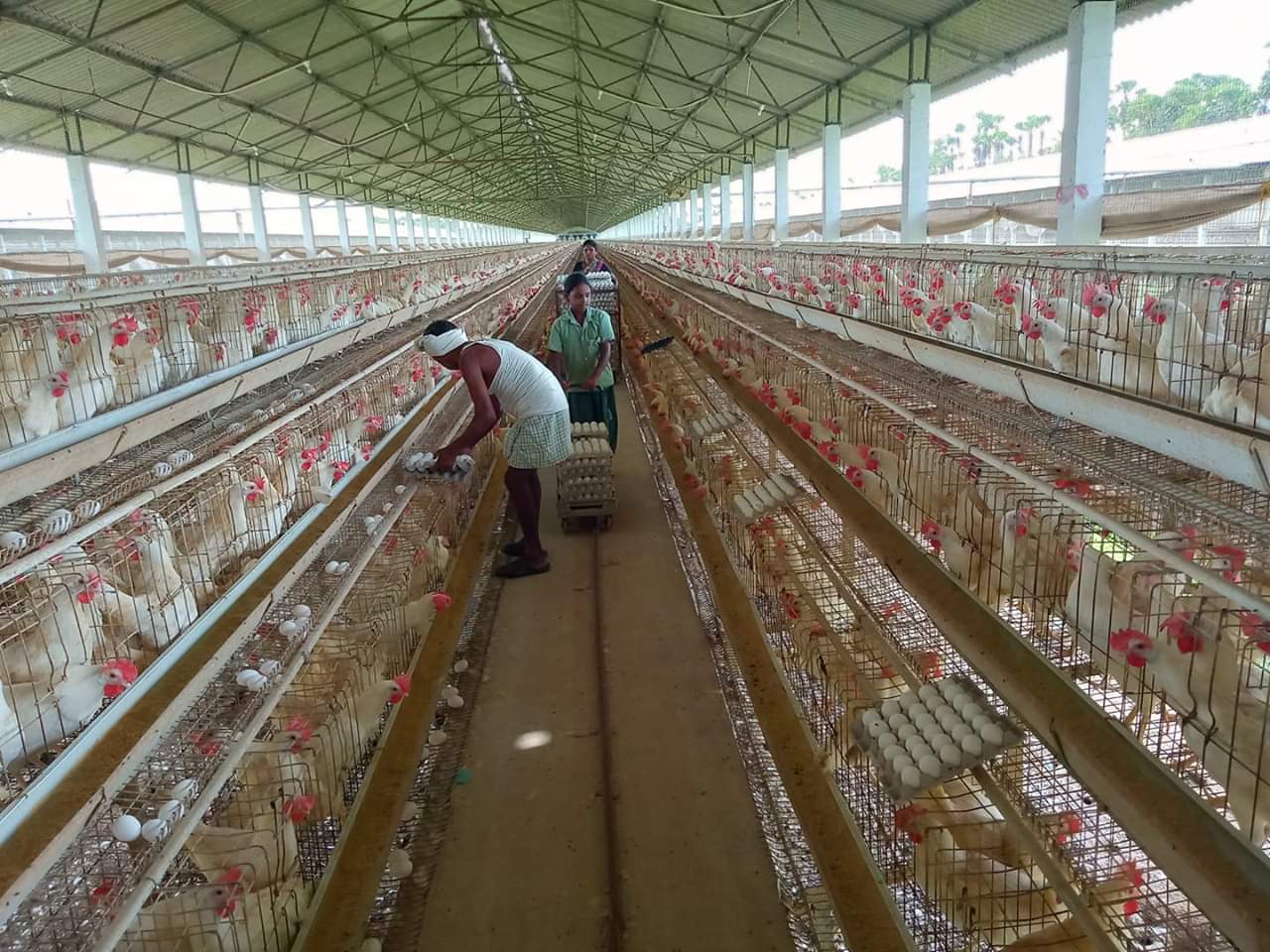Newcastle Disease (Ranikhet Disease)
Causative agent-Paramyxoviridae group of enveloped RNA viruses. The important in poultry is Avian paramyxovirus type-1 (PMV-1)
NDV strains and isolates are placed in five pathotypes depending on their ability to cause distinctive signs and severity of the disease. Viscerotropic Velogenic NDV
Highly virulent, exhibits characteristic haemorrhagic lesions in intestines.
Neurotropic Velogenic NDV
High mortality with respiratory and nervous signs.
Mesogenic NDV
Respiratory and some times nervous signs are seen with low mortality.
Lentogenic Respiratory NDV
Mild or inapparent respiratory signs.
Asymptomatic Enteric NDV
Inapparent enteric infections.
SIGNS
Depending upon pathotype the symptoms may vary considerably.
The factors influencing the symptoms are species of the bird, immune status, age and managemental practices.
Highly virulent virus is recognized by sudden death.
Depression, prostration, diarrhea, oedema of head and nervous signs with high mortality sometimes reaching 100%
The tracheal rales, shell less or soft shell eggs followed by complete cessation of egg laying are the early signs of the adult flocks.
Moderately virulent mesogenic form causes severe respiratory disease followed by nervous signs and mortality reaching 50%.
Varient virus produces no respiratory signs in infected birds but diarrhea and nervous signs are the main symptoms of the disease followed by severe drop in egg production.
The virus of low virulence may show mild respiratory distress or no symptoms at all.
This may result in loss of weight in Broiler Chickens.
Lesions
Inflammation of trachea with haemorrhages. (Fig-11.3)
Airsacs are inflamed, cloudy and congested
Haemorrhages in proventriculus is not a constant feature. (Fig-11.9)
Necrotic button ulcers in the intestines are frequently seen (Fig-11.4, 11.5, 11.6 and 11.7)
Caeca with necrotic material exhibiting foul odour.
Ovaries flaccid. Peritionitis and watery yolk material in abdominal cavity. (Fig-11.8)
Histopathology
Histopathology is of little value in diagnosis. However, the changes seen are
Trachea – inflammation, cellular infiltration and haemorrhages are seen.
LUNG – Proliferative and exudative.
Lymphocytic infilitration in the airsac membrane, lungs and trachea may be seen in milder forms.
SPLEEN – Hypoplasia of lymphoid cells.
INTESTINES – catarrhal enteritis with infiltration of mononuclear cells in the mucosa and submucosa with necrosis.
Mucous membrane and lamina propria is infiltrated with mononuclear cells and congestion.
DIAGNOSIS
In acute cases – gross lesions are enough to diagnose the disease.
In subacute or mild or chronic cases – confirmation by ELISA is necessary
HI test is commonly used.


